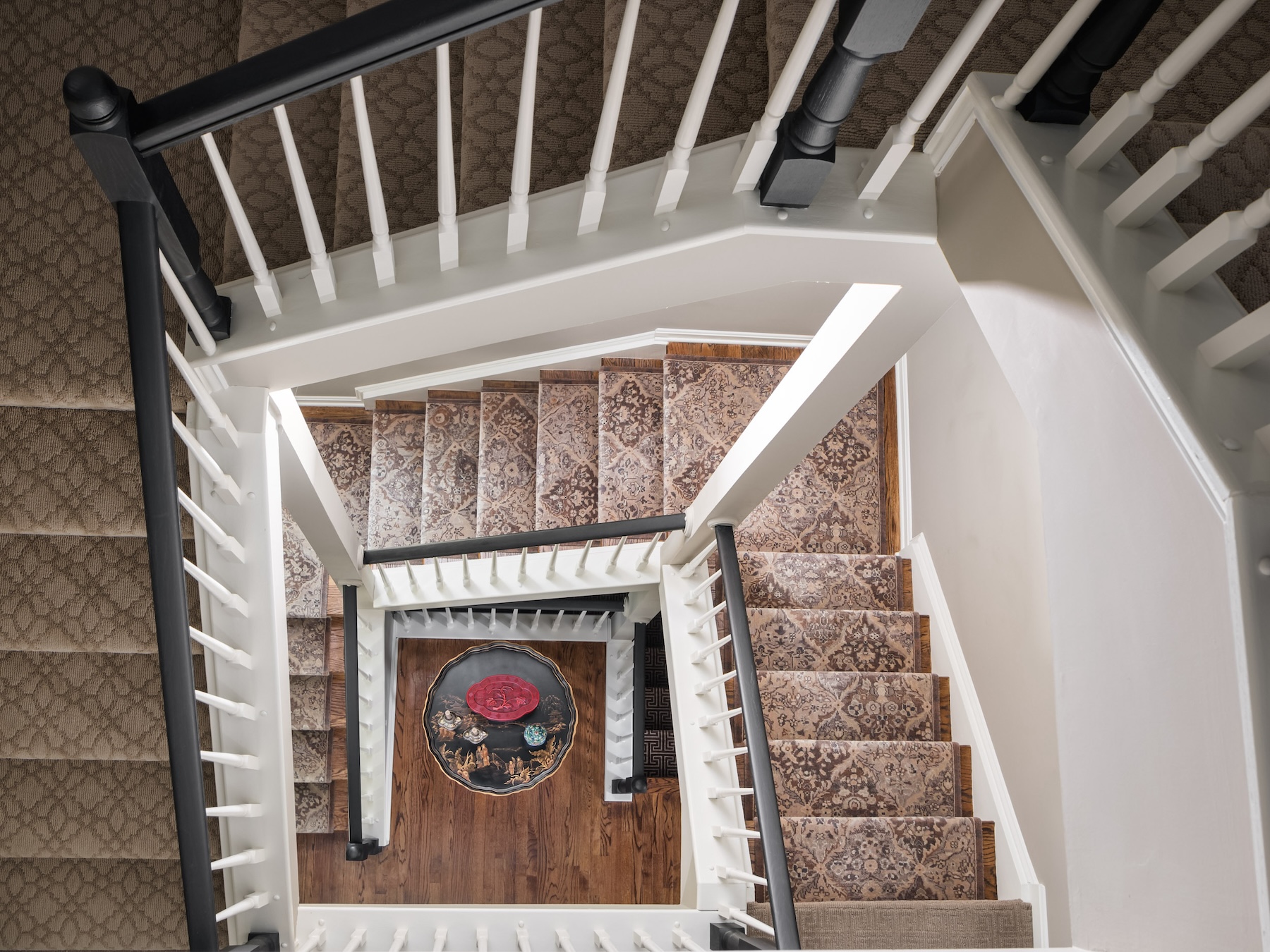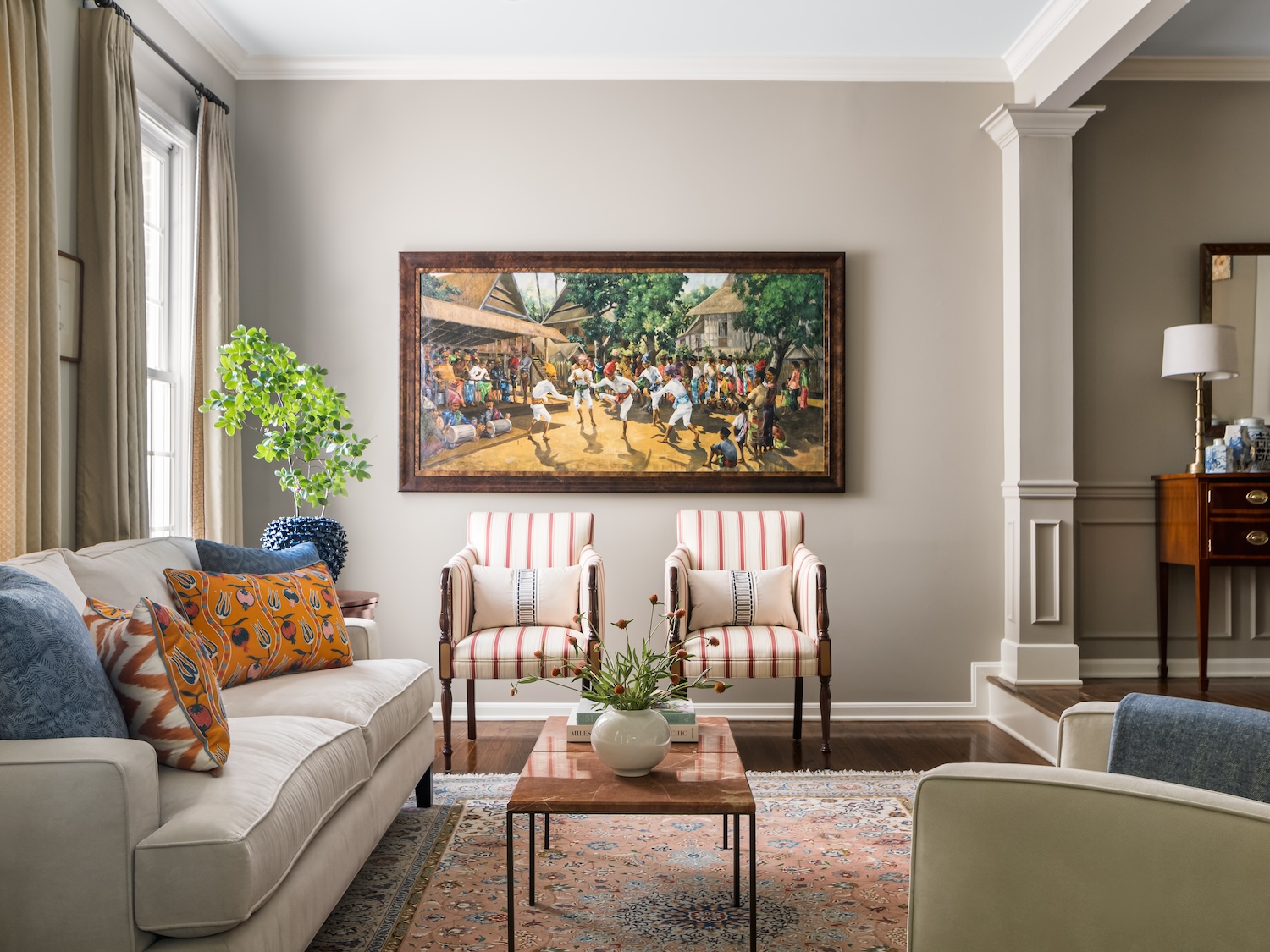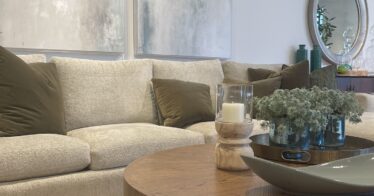These transitioning stair runners in a client’s four-story townhouse exemplify how thoughtful design choices can create distinctive spaces that remain delightful years after installation. Guests often comment they would never have thought to vary the patterns between floors but love the unique visual interest it creates—a perfect example of design that reflects personal style rather than following trends. (Design by Pembrook Interiors, Photography by Peak Visuals, Styling by Kristen Alcorta)
Have you ever walked into someone’s home and felt an immediate sense of “rightness”—a space that just works on every level?
Or perhaps you’ve experienced the opposite: investing time and money into your own home only to feel that something essential is missing?
The difference isn’t always in the budget or even in the designer’s technical skill. The magic ingredient? Asking the right questions before a single swatch is selected or piece of furniture is moved.
The Problem with Pinterest-Perfect Homes
We’ve all done it—created boards full of stunning spaces, collected magazine tearsheets, and bookmarked design blogs.
Here’s what I’ve learned after a decade of working with clients to transform their homes: aesthetic inspiration is actually the last piece of the puzzle, not the first.
Many homeowners find themselves disappointed with their finished spaces despite following current trends and working with competent professionals. Why? Because so often the design process starts with “what do you want it to look like?” instead of “how do you want to live?” or the even better “how do you want to feel when you walk in the door?”
The Discovery Gap
I call this the “discovery gap”—the space between surface-level preferences and the deeper understanding of how you actually experience your environment. It’s the difference between a showroom-perfect living room that no one uses and a thoughtfully designed space that supports your real life.
One of my clients, a busy consulting firm executive, came to me perplexed by the function of a room in the home she just purchased. The “mystery room” was staged as a breakfast room. Through our discovery process, she realized that what she truly needed was a family room, a cozy spot for television, just off the kitchen.
The solution wasn’t just different furniture—it was a completely different approach to the space that aligned with her actual lifestyle rather than the pre-determined idea of what the space needed to be. The interesting thing is that the room looks like it has always been a family room and it is the most used room in the home!
The Questions That Transform Spaces
In my years of practice, I’ve refined our discovery process. At Pembrook Interiors, although we ask many more questions, there are six essential questions that get to the heart of our design objective. Our goal is to understand how you live and create an environment that supports and enhances your life beautifully.
Our questions aren’t the typical “what’s your favorite color?” inquiries, although we do like to know your favorite color. The questions are thoughtfully crafted prompts designed to reveal patterns in how you interact with your environment—insights that many people have never consciously articulated.
For example, one of our key questions is:
“What’s something you do in your current space that feels like you’re ‘making it work’ rather than the space truly supporting that activity?”
This single question has revealed countless opportunities for meaningful improvement—from the client who “only sat in one uncomfortable chair” (her words) in her four-story townhome to the executive couple who lived in a cramped primary suite for 15 years thinking the room could not accommodate a king bed.
Another question explores the emotional dimension of design:
“If your space could tell a story about you and your family, what would you want that story to be?”
When a client tells me they want their home to tell a story of “creative inspiration and intellectual curiosity,” that guides every subsequent decision differently than if they want a story of “calm sanctuary and peaceful retreat” or “vibrant gathering place for friends and extended family.”
From Frustration to Function
The impact of this discovery-first approach extends far beyond aesthetics. Clients report not just loving how their spaces look, but experiencing tangible improvements in their daily lives:
- The couple who lived in a cramped primary bedroom for 15 years, convinced they couldn’t possibly fit both adequate storage and a king-size bed—until our discovery process revealed opportunities to reconfigure the space, giving them both the luxurious sleep environment and organized closets they’d been longing for.
- The art collector who loved to entertain but struggled to integrate inherited furnishings or display her art collection in a welcoming way—now her home seamlessly showcases her treasured pieces while functioning perfectly for her downtime alone, intimate dinners, and large gatherings.
- The family whose kitchen remodel left them with a lovely, but unfinished and characterless space that could have been in anyone’s home—through our questions, we uncovered their passion for great wine, travel, and nature, inspiring design elements that made the kitchen uniquely theirs while improving functionality.
Beyond Trends: Design That Lasts
Perhaps the most significant benefit of this approach is longevity. Trend-focused design has a built-in expiration date. But when your home is designed around your authentic preferences and lifestyle patterns, it remains relevant and functional even as aesthetic trends evolve.
A well-designed home should feel and look great for at least 15 years, making it not just an aesthetic choice but a truly valuable long-term investment.
One client with a four-story townhouse recently told me—five years after we completed her project—that while her friends were already planning their next renovations, she still wakes up grateful for her space every day.
Her guests consistently admire unique elements like the transitioning stair runners that change subtly between floors, often commenting they would have never thought to do it but love the effect. That’s because we designed for her life and personal story, not just for that year’s design trends.
Your Turn: Discover Your Design Truth
For those embarking on design projects of any scale, we have distilled our professional discovery process into a guide that walks you through six transformative questions. Whether you’re working with a designer or tackling a project on your own, these questions will help you articulate what you truly need from your space.
Each question includes not only the “why behind what we ask,” but also practical insights on how your answers can translate into specific design decisions.
Ready to transform your space into one that truly reflects who you are and how you live? Click below to access our free design discovery guide Uncovering the Heart of Your Home: Six Essential Questions for a Space That’s Truly Yours:
Because great design doesn’t begin with fabrics, furniture, or even floor plans. It begins with understanding the unique way you experience your environment—and that understanding starts with asking the right questions.
Jennifer Fordham is the principal designer at Pembrook Interiors, specializing in creating spaces that authentically reflect and support clients’ lifestyles. With over 10 years of experience transforming homes throughout the DC Metro area, she believes thoughtful discovery is the foundation of every successful design project.









